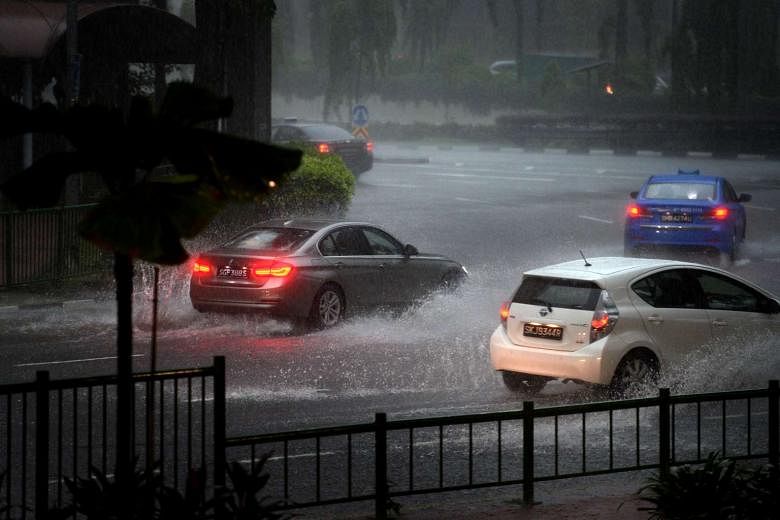Singapore has been experiencing heavy rainfall and a few flash floods of late. Reader Ben Koh asked how safe it is to drive on a flooded road.
"What's a practical way of figuring out whether it is go, or no-go?" he asked.
Senior transport correspondent Christopher Tan replied.
How safe it is to drive on a flooded road depends much on the vehicle you are driving (or riding). A full-fledged sports-utility vehicle like a Land Rover Defender will have a much better clearance than say, a sports car. And a scrambler will have a better clearance than a Harley-Davidson.
A typical family car has a ground clearance of 120 to 140mm, which is not very high at all. Generally, it is safest not to drive through a flood. But if you have to, gauge the water depth by looking at road curbs. If the curbs are still visible, or just below water level, it is relatively safe to proceed.
When driving on a submerged road, proceed with a gentle and steady throttle. In other words, keep a slow and steady pace. Do not lift your foot off or apply the brakes midway. This is to minimise turbulence and backflow, which might cause water intake.
If the curb is not visible at all, it is riskier to proceed, unless you are in a tall SUV. Even so, follow an even taller vehicle like a bus or a truck. Otherwise, you may end up driving into a drain or canal, or over a ledge.
After you have cleared the flooded area, apply the brakes gently for a minute or two to rid them of moisture, which might have affected their performance.



